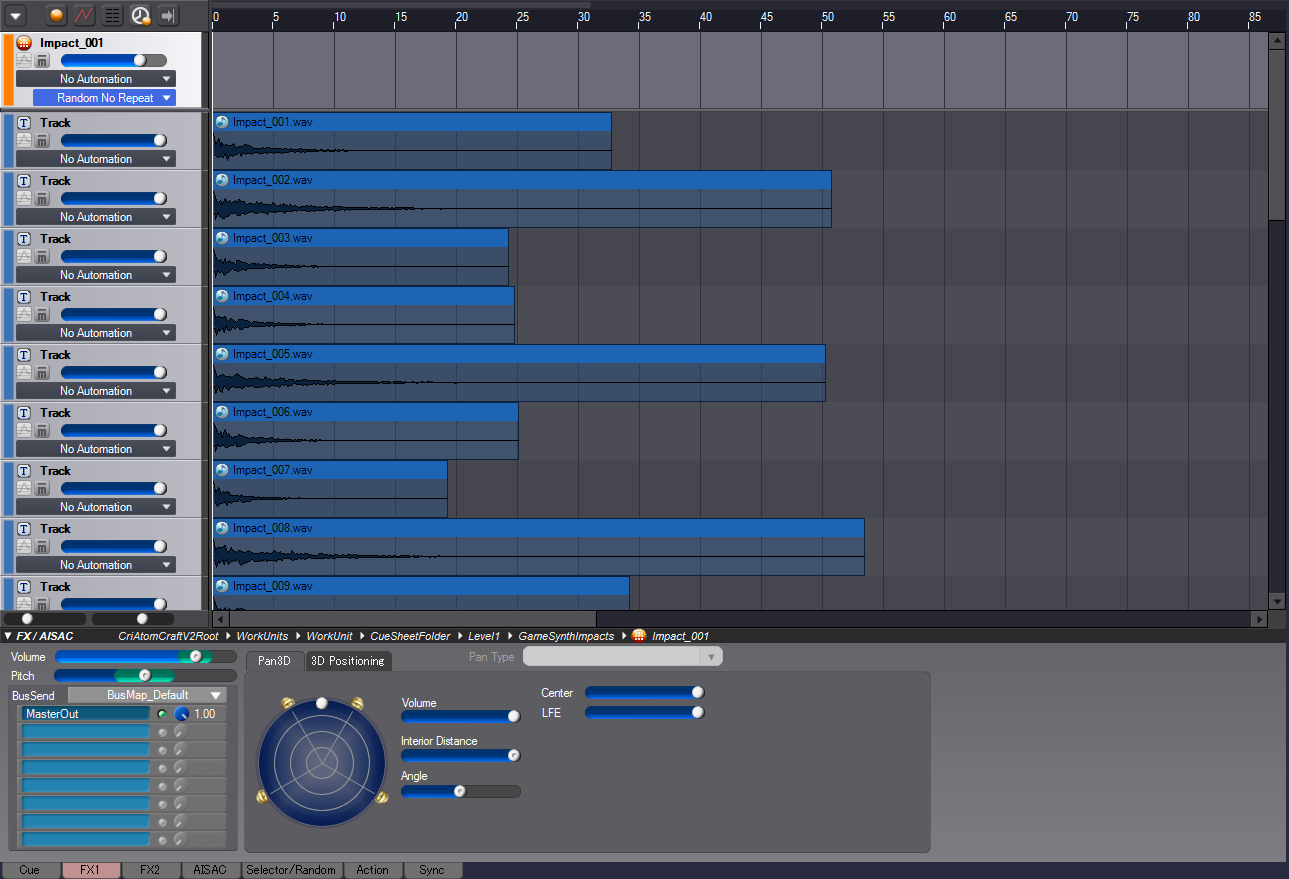Exporting from GameSynth to AtomCraft
In this post, we are looking at how we can automatically generate sound variations in GameSynth and export them to AtomCraft, creating all the audio objects on the fly, such as Materials, CueSheets, Cues and Tracks and setting their parameters according to our specifications.
GameSynth is a popular sound design tool from Tsugi that allows for the creation of game sound effects using real-time synthesis. In GameSynth, most parameters can have random ranges (seen in yellow in the screenshot below). By adjusting these random ranges and selecting a global variation percentage, it is possible to automatically create many variations of a sound, a very useful feature to fight audio repetitiveness in games or to quickly create placeholder assets.

If you want to add 30 impact sounds to your AtomCraft project, design your procedural audio patch in GameSynth and then assign some random ranges to it. Then, click on the “Export” button in the command panel.
At the top of the window that appears, in the “Target” section, select ADX2 for the game audio middleware and then specify your AtomCraft project file (it has an .atmcproject extension). Some of the fields in the other sections will get populated based on the items in your project.

The next section allows you to specify how many wave files you want to generate and with what amount of variation. Here, we want to generate 30 files with a 25% variation. We can also choose the number of channels of the wave files and how they should be named (base name + starting index).
The “Assets Organization” section is about what type of objects you want to create and where to insert them in the project. You can select a Work Unit, a CueSheet, a Material subfolder etc… You can also choose if you simply want to register the wave files as Materials, or if you also want to automatically create Cues (either a single one containing a Waveform Region per Track, or several Cues, i.e. one per Material.)
The last section lets you define the type and parameters of the Cues. For example, here we opted for a Random No Repeat Cue, which means that each time we trigger the Cue, a new impact sound will be randomly selected (without any repetition). You can also specify the voice behaviour, the bus map to use as well as the default values for the volume and pitch parameters and their respective random ranges.
Once you click on OK the wave files are generated and exported into the project and the relevant items are added. If you checked the box top at the bottom of the window, AtomCraft is also launched.
Lets’ see the result!

You can see that the wave files have been imported in the Material subfolder of our choice. In addition, a unique Cue of type “Random No Repeat” has been created according to our settings, in our own CueSheet. Tracks have been added to the Cue, each one with a Waveform Region containing one of the Materials. Finally, the parameters have been set as requested. Notice the random volume and pitch ranges, displayed in light blue on the screenshot below.

The combination of GameSynth and AtomCraft make your audio implementation work much faster!


